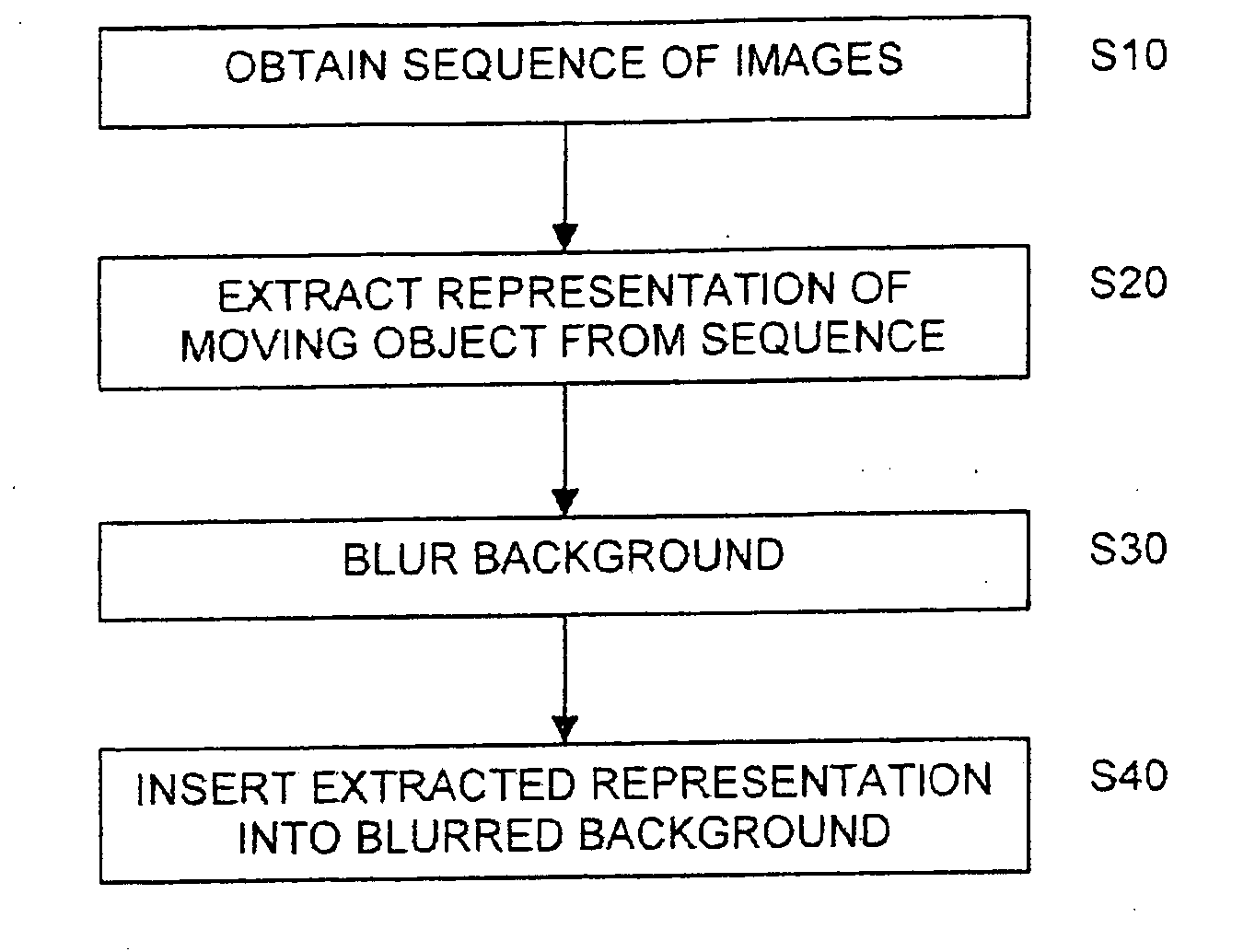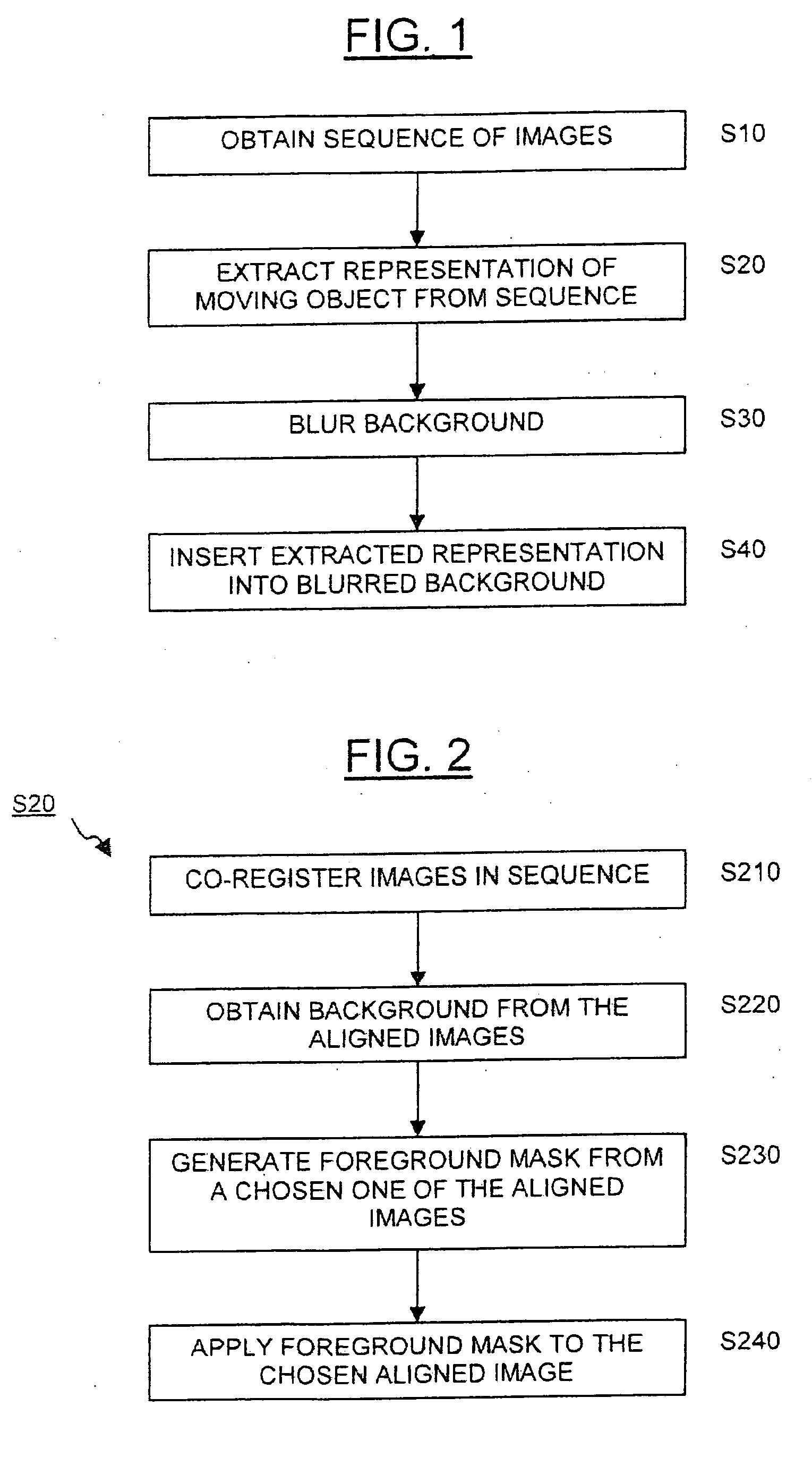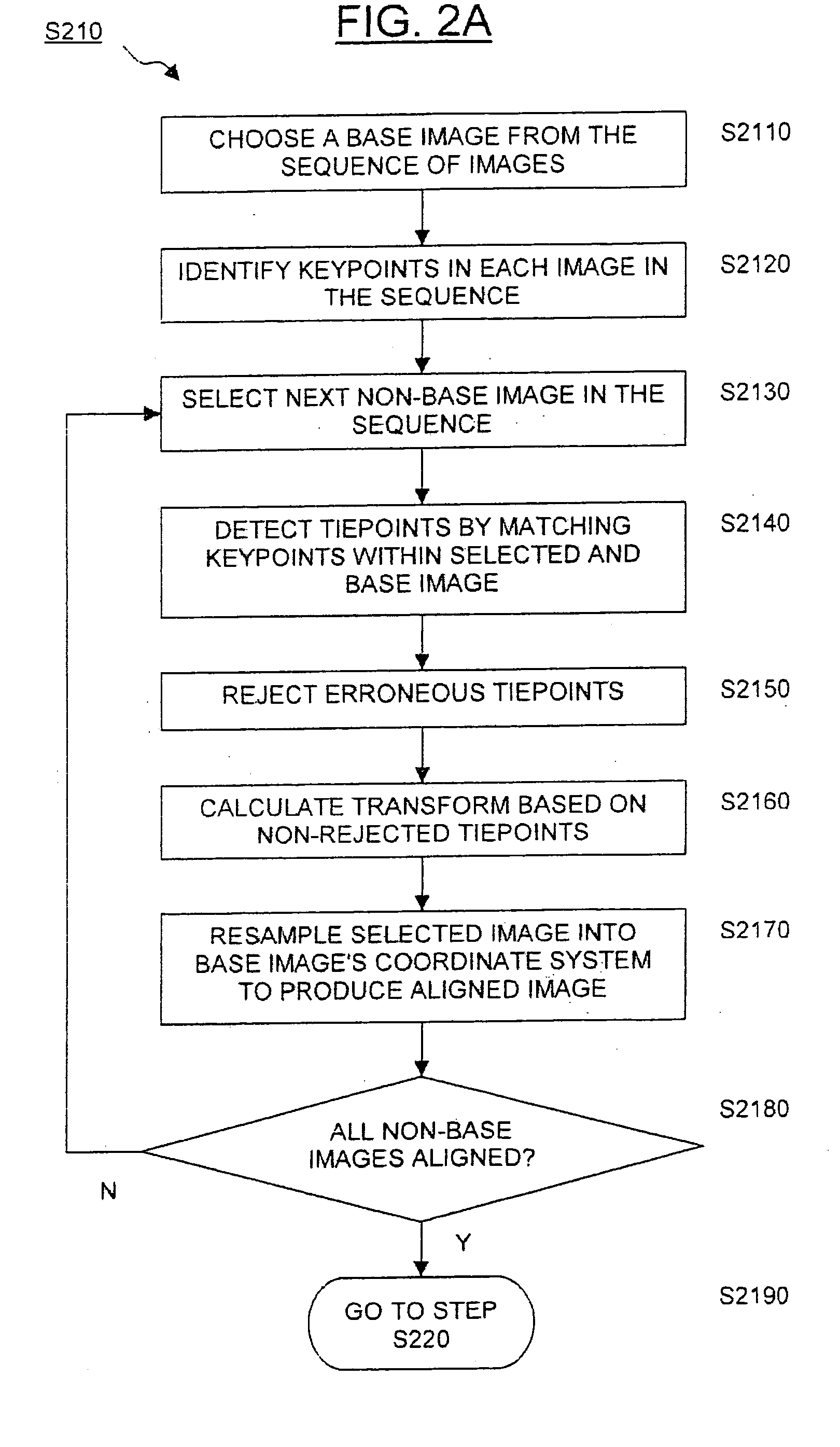Segmenting images and simulating motion blur using an image sequence
a motion blur and image sequence technology, applied in the field of digital video image processing, can solve the problems of not being able to address the problem of identifying and isolating a moving foreground object, and none of the existing imaging systems described above address the problem
- Summary
- Abstract
- Description
- Claims
- Application Information
AI Technical Summary
Problems solved by technology
Method used
Image
Examples
Embodiment Construction
[0019] Exemplary embodiments of the present invention are disclosed in the following description.
[0020] According to an exemplary embodiment, the present invention is directed to a method and apparatus for receiving a sequence of images (e.g., digital photographic images taken in relatively rapid succession) depicting a foreground object moving in relation to a background scene. One example of this is a sequence or time series of images of a particular stretch of roadway, through which a car (or jogger, bicycle, object, etc.) is traveling. In such an example, the car (or jogger, bicycle, object, etc.) represents a moving foreground object, and the relatively stationary features in the sequence of images (e.g., the roadway, trees, road signs, sky, etc.) represent the background of the sequence of images. An exemplary embodiment of the present invention is directed to identifying and isolating a moving object from the background in the sequence of images.
[0021]FIG. 5 illustrates an ...
PUM
 Login to View More
Login to View More Abstract
Description
Claims
Application Information
 Login to View More
Login to View More - R&D
- Intellectual Property
- Life Sciences
- Materials
- Tech Scout
- Unparalleled Data Quality
- Higher Quality Content
- 60% Fewer Hallucinations
Browse by: Latest US Patents, China's latest patents, Technical Efficacy Thesaurus, Application Domain, Technology Topic, Popular Technical Reports.
© 2025 PatSnap. All rights reserved.Legal|Privacy policy|Modern Slavery Act Transparency Statement|Sitemap|About US| Contact US: help@patsnap.com



